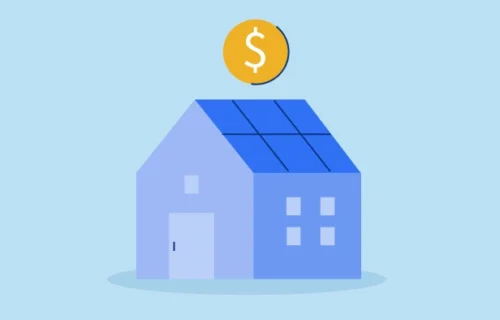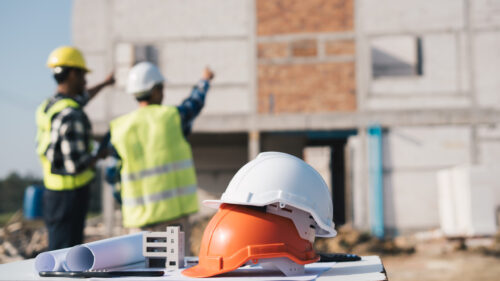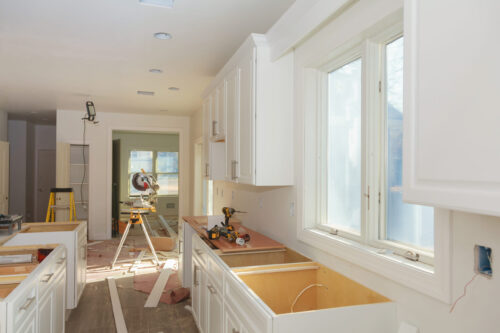
Connect with a Lima One expert today!
If you’d like to know more about this topic or see how it applies to your project, let’s talk.
Lumber Prices Are at an All-Time High, Sending New Construction Through the Roof
Lumber Prices Keep Going Up, and New Construction Investors Must Adjust
The price of lumber is literally changing by the minute. In a single week in April, lumber prices fluctuated between $1,075.40 and $1,205.50 per 1,000 board feet.
It’s not just lumber prices that have skyrocketed. Other homebuilding materials have as well. Crude oil, a starting point for paint, drainpipe, roof shingles and flooring, is up from $36.40 per barrel in October to $59.16 per barrel in March.
Copper, which carries water and electricity throughout houses, increased in February for the fourth straight month. Prices for granite, insulation, concrete blocks, and common brick have all pushed to records in 2021, according to the Bureau of Labor Statistic’s producer-price index.
Lumber prices have skyrocketed nearly 200% since April 2020, according to the National Association of Home Builders. The increased prices have added about $24,000 to the price of new single-family homes and $9,000 to the price of multifamily units.
The result? Despite an unquenchable desire for new housing stock, single-family and multifamily housing production continued to weaken in February because of higher materials costs. A recent report by the U.S. Department of Housing and Urban Development and the U.S. Census Bureau shows that single-family starts decreased by 8.5% and multifamily starts decreased by 15%.
On a regional basis compared to the previous month, combined single-family and multifamily starts are 39.5% lower in the Northeast, 34.9% lower in the Midwest, 9.7% lower in the South and 17.6% higher in the West.
As prices continue to increase, builder confidence has fallen. Builder confidence peaked at 90 in November and by March had dropped to 82. Builders are seeing strong buyer traffic, but increasing material costs, mortgage interest rates, and delivery times depressed builder sentiment in March.
So real estate investors who see the massive opportunity that build to rent provides, as an example, find it harder to make the numbers work on new construction investments.
How It Started
Like most of the issues currently facing builders, developers, and investors, lumber prices began increasing at the start of the pandemic. State-mandated lockdowns forced sawmills across the country to close, reducing the availability on the market.
From the beginning, the pandemic created a perfect storm for surging lumber prices. While sawmills were limiting production during the early months of COVID, the pandemic spurred a do-it-yourself boom among Americans stuck at home.
That supply and demand mismatch was made worse by record low interest rates and a historically tight existing housing inventory which caused buyers to rush to new construction. The backlog is so big that prices aren’t falling despite wood production hitting a 13-year high in February.
The current state of the lumber market looks vastly different than it did in 2019. Weak demand prompted output reductions and mill closures from some of the world’s leading lumber suppliers, which meant production capacity wasn’t available when things turned around.
Now, as we head into peak building season, stockpiles of lumber are lean and lumber prices are expected to remain high.
A Path to Solutions
The lumber shortage will likely continue through the summer peak of U.S. home building as labor shortages and depleted inventories mean that supply can’t catch up to the skyrocketing demand.
Timber production will have to increase in order to reduce costs associated with transportation and manufacturing. With the future of lumber prices uncertain, home building associations have had to look at other alternatives to seek relief.
The National Association of Home Builders, along with 35 other housing organizations, wrote a letter to President Joe Biden and leaders at the U.S. Department of Commerce, U.S. Department of Agriculture and the U.S. Forest Service asking to examine the lumber supply chain from the woods to the mills to construction sites and look into solutions for the high costs.
The letter also explained that building 1,000 average single-family homes would create nearly 3,000 full-time jobs and generate almost $111M in taxes and fees, emphasizing the economic benefits the government would reap in finding solutions to the expensive building materials.
"Housing and construction can do their parts to create jobs, boost the economy to its pre-pandemic strength, and provide safe and affordable housing for all Americans, but in order to do so the federal government needs to address skyrocketing lumber prices and chronic shortages," the letter said.
What to Expect
Lumber futures have surged more than 60% to record highs this year, and analysts aren’t expecting any relief until late 2021. There is hope, however, that as vaccines continue to rollout successfully, the current housing environment would stabilize.
As lumber prices go down, more homes can be built at numbers that work, which should raise overall sentiment and builder confidence.
There’s no guarantee lumber prices will return to the April 2020 price of $358 per 1,000 board feet. But a correction isn’t out of the question. Experts believe the correction will be the result of lumber supply finally catching up at the same time rising interest rates for forward mortgages slow homebuying.
So, what does that mean for real estate investors considering new construction or other heavy-rehab real estate projects in 2021? The demand for new housing stock is strong, but investors must watch construction budgets carefully to ensure they can complete builds with profit margins intact. Thankfully, lumber inventory is now dependable at stores like The Home Depot, even if pricing is still higher than investors would prefer. But this is the first step toward new construction environment with strong demand, reasonable lumber prices, and a clear path to profits for savvy new construction and build-to-rent investors.
Subscribe for More Insights
Get the latest industry news & Lima One updates.









